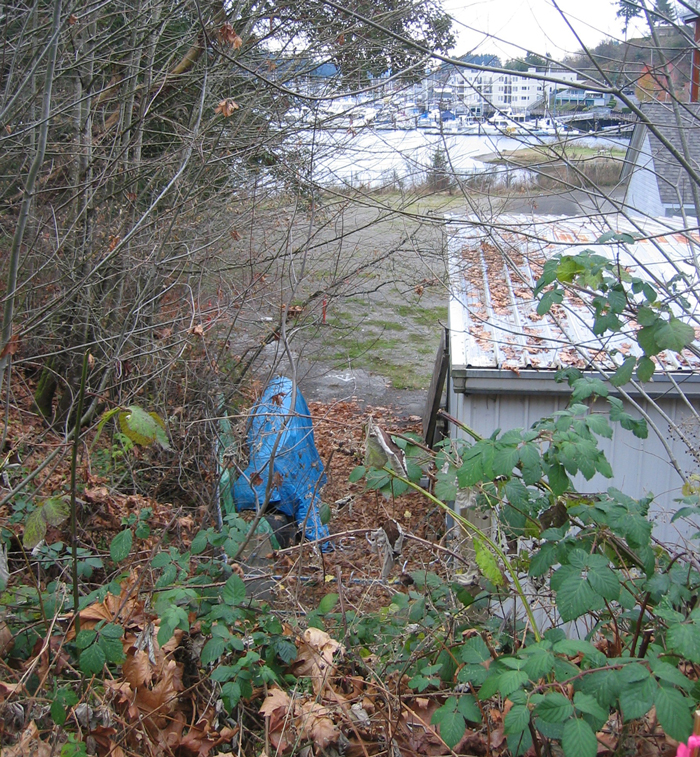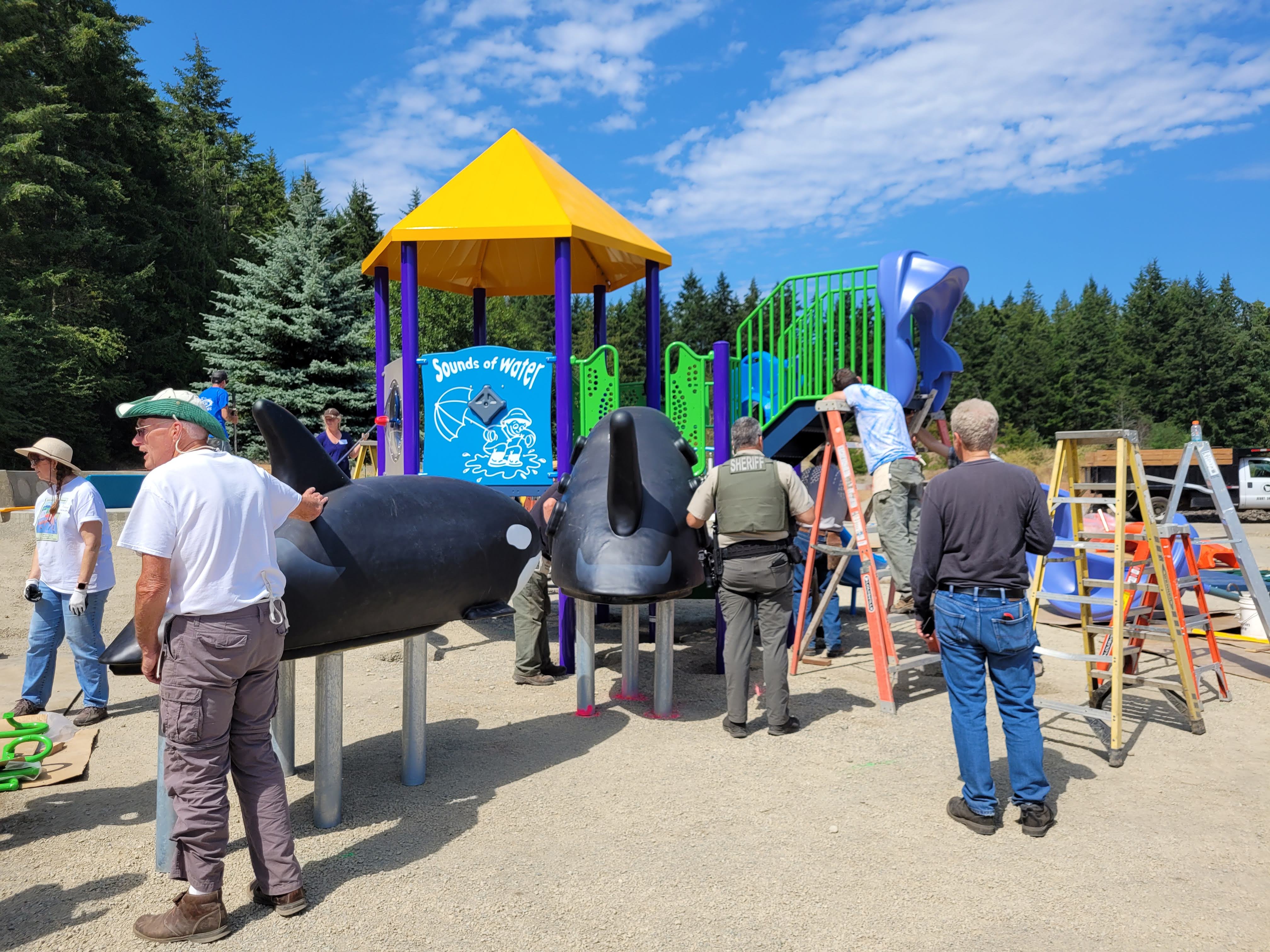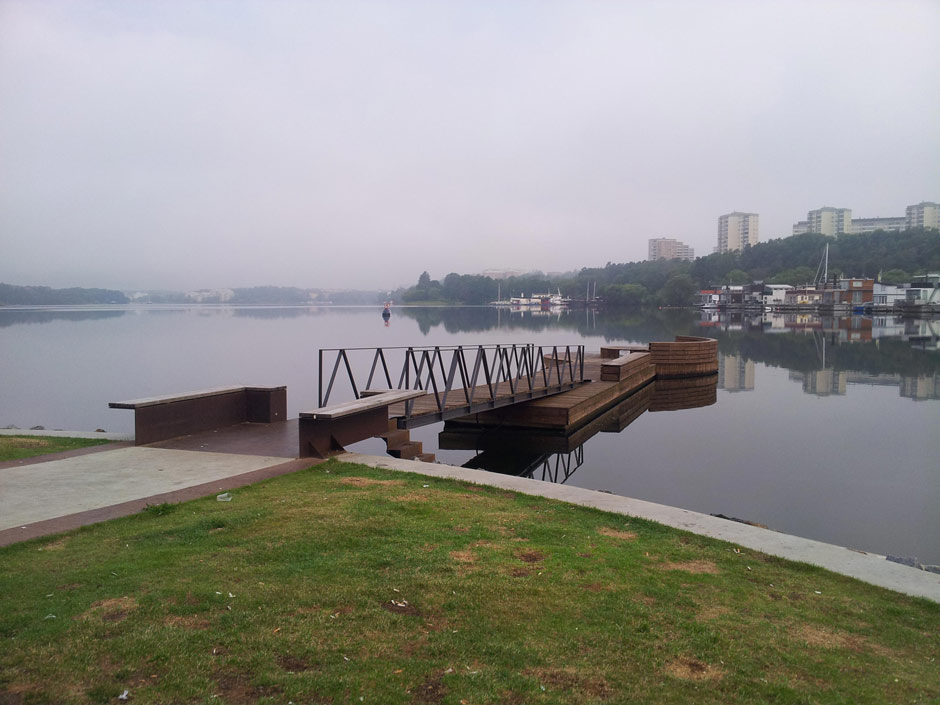Chum Festival at Donkey Creek
September 29, 2014 | By Admin |
 The Chum Festival is a time to celebrate the annual return of salmon to Donkey Creek. The Gig Harbor community gathers at Donkey Creek Park for competitive kayak races, eating salmon burgers, and fish printing on T-shirts.
The Chum Festival is a time to celebrate the annual return of salmon to Donkey Creek. The Gig Harbor community gathers at Donkey Creek Park for competitive kayak races, eating salmon burgers, and fish printing on T-shirts.
The festival is a long-standing tradition, but this year was a landmark for the salmon, who will shortly return to find that culvert they swam out of as fry is now a gravelly stream. The daylighting and estuary restoration designed by Parametrix and Nakano Associates, completed this spring, improves the experience for marine life and human visitors alike.
The project removed the 350-foot-long culvert and replaced a section of road with a bridge. Creek and estuary improvements included stabilizing the stream bank against future erosion and improve the stream as a spawning habitat for Chum Salmon. An accessible walking path along the creek and beneath the bridge connects Donkey Creek Park with Harbor History Museum and the Austin Estuary Park. The trail includes seating areas and is bordered by northwest native plant material. Additionally the upper creek sides were revegetated with northwest native trees and shrubs.
Before and After looking upstream:

Donkey Creek site BEFORE daylighting, looking upstream

Donkey Creek AFTER daylighting, looking upstream (photo taken spring 2014)
Before and After looking downstream:

Donkey Creek site BEFORE daylighting, looking downstream

Donkey Creek AFTER daylighting, looking downstream
WildWatch naturalists led guided tours explaining the restoration of Donkey Creek and what it means for chum salmon.

Harbor WildWatch Naturalist Tour
Harbor WildWatch Naturalist Tour
After the tour, the naturalists pointed out where a listless Giant Pacific Octopus was spotted in Donkey Creek the week before. Check out the video of the octopus they shared on their Facebook page: https://www.facebook.com/video.php?v=10202904327225827

As a habitat restoration project, every aspect of the Donkey Creek project was designed with ecological stewardship and sustainability in mind. By stabilizing the stream bank and planting native vegetation, the project works toward reestablishing the native ecosystem and biodiversity. Existing native vegetation guided the selection of plant material. Site furniture and interpretive signage are located to maximize views and highlight natural features in such a way that visitors are educated about the importance of salmon runs and healthy streams.
















